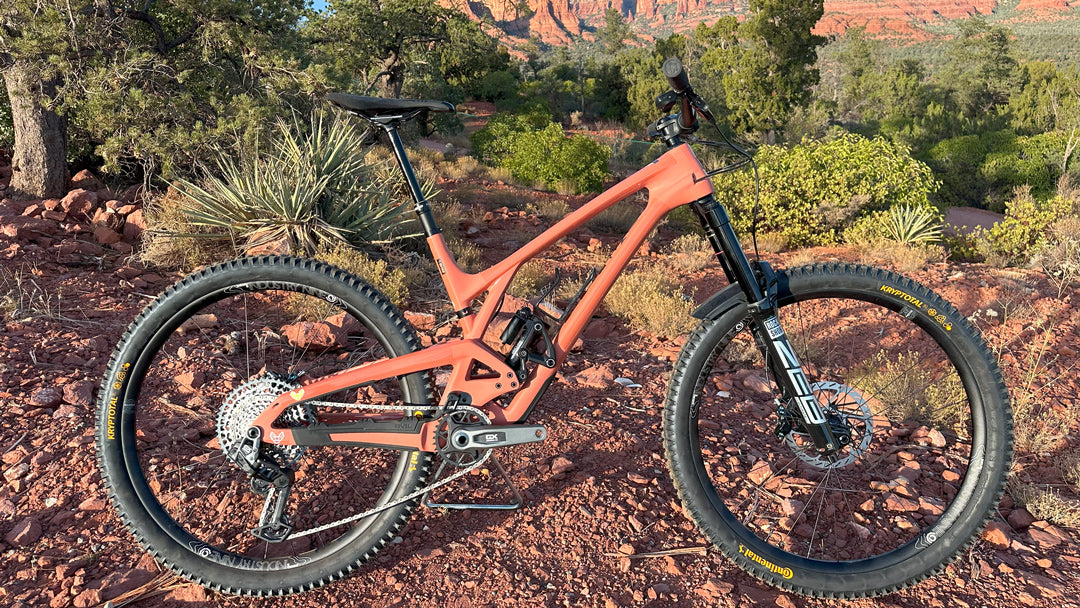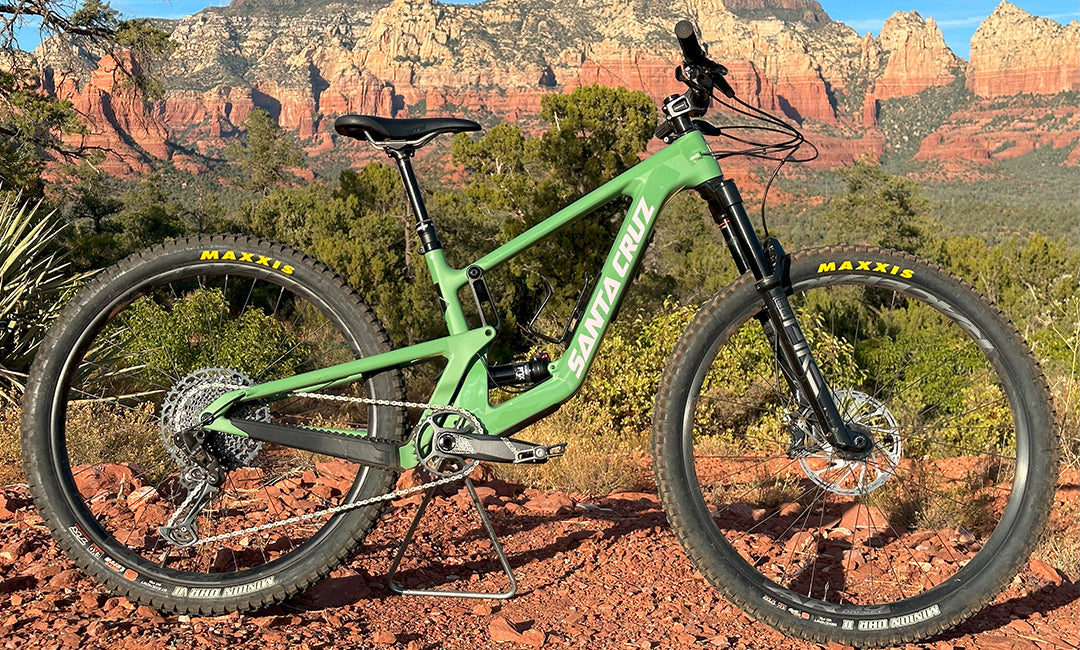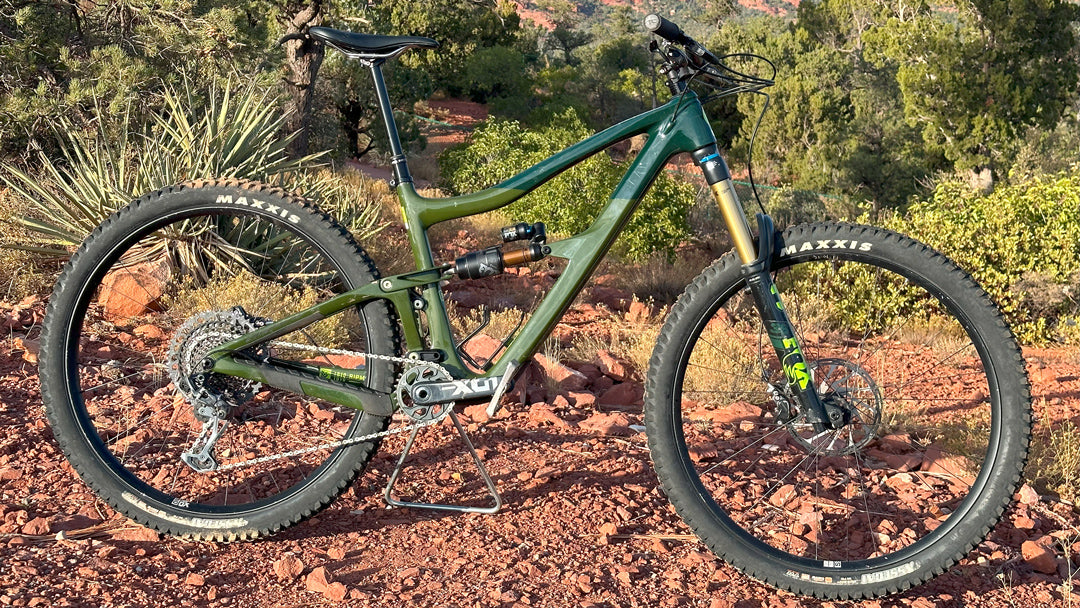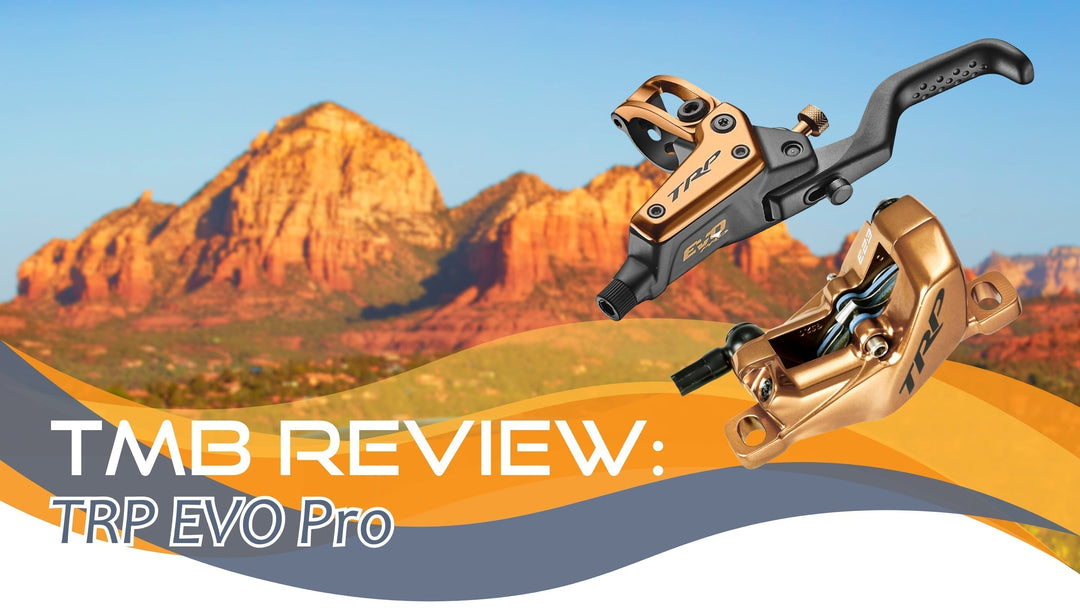DEMO TO WIN: How To Pick Your Next Bike

Thunder Mountain’s high-end rental fleet is the perfect way to test killer bikes and decide on your next ride
If you are on the market for a new mountain bike, you know how difficult choosing the right one can be.
It’s estimated that there are some 200 active bike brands in the United States today. That sharp competition, as well as deep investments in R&D, has contributed to wholescale improvements.
"Man, bikes have just gotten so good. You almost can’t find a bad one these days,” says Mike Raney, owner of Thunder Mountain Bikes (TMB).
Meanwhile, prices keep rising, courtesy of both new technologies such as SRAM Transmission and Fox Live Valve, as well as basic inflation. The convergence of these factors—broad selection, high standards across the industry, and high prices—makes settling on a next bike feel more confounding than ever.
I used to take all of this for granted because I tested and reviewed bikes for Outside Magazine for over a decade, which meant I got to ride and pick from 100+ models per year. But I no longer have that luxury. And as I go to pick a new bike I’m realizing how challenging choosing can be.
Enter Thunder Mountain Bikes.
Not only does TMB keep up on the latest, hottest brands and models, but it stocks many of them for guests to demo.
“Our job is to keep up with the market and trends and continue to offer the best mountain bikes and technology available,” says Raney.
“We’re building bikes we want to ride in Sedona, and we pride ourselves on having some of the best rentals anywhere.”
And if you happen to decide to buy a bike from TMB, they’ll waive the rental cost.
I decided to take advantage of the program for an abbreviated bike test to help decide on my next ride. For the record, I currently ride a 2019 Specialized Stumpjumper ST, with 120mm of rear travel and a 130mm fork, which is still extremely capable but has got me wondering if I want or need a bigger bike.
During a recent visit, I rode one TMB rental bike per day on my possible to-buy list, taking in around 3-4 hours of pedaling on each. I’m glad I did. I had great rides on each one, but some hit for me, some didn’t. And I rode away with a much clearer sense of what I want and need.
Below is the shortlist, in chronological order I rode the bikes. Click through for more on each model.
Revel Rascal
Launched in early 2019, Carbondale, Colorado–based Revel bikes is young, hungry, and arguably one of the most sought-after brands today. The company uses Canfield’s CBF suspension, which, in my previous experience with that Colorado brand, produces an extremely limber bike feel without compromising efficiency. The Rascal is Revel’s all-purpose trail bike, with 130mm rear end paired to 140 up front. It’s the closest bike in the group to what I currently own, though it’s longer, slacker, and all-around more modern. To me, Revel makes some of the best-looking bikes going right now, so my expectations were high. And I wasn’t disappointed.
Evil The Wreckoning
Evil enjoyed the same buzz as Revel does today, but it was a decade earlier following the company’s debut. And thanks to the consistently buttery ride quality, the brand still has a rabid following. I’ve always liked bikes designed around suspensions by Dave Weagle (think: DW and Split Pivot), so Evil’s Delta has forever been on my favorites list, despite its weight and complexity. With 166mm of rear travel and a 170mm fork, The Wreckoning is a bit out of my wheelhouse, more enduro than trail ride. But I thought it would be a good one to test my limits. I also wanted to ride it because it was equipped with SRAM AXS, which I haven’t had a chance to spend any real time aboard. And we fared pretty well together.
Santa Cruz 5010
I chose the 5010 for one reason: It’s a mullet build—29er wheel up front, 27.5 out back—which is a trend I just haven’t wrapped my head around. Truth told, I went into this test ride wanting to hate this bike. Mixed wheel sizes on a single bike seems gimmicky and unnecessarily complicated. And yet, I ended up really enjoying this all-arounder, with 130mm rear end and 140mm up front.
Ibis Ripmo V2S
When Ibis debuted the Ripmo back in 2018, I loved it so much that after my few months of testing for the magazine, I purchased it outright. I’ve always been partial to DW Link suspensions, and today’s Ripmo not only employs the same setup but also hasn’t diverged too far from the original travel, with 147mm out back (versus 145 in 2018) and 160mm fork (same). That’s a big-travel bike for six years ago but pretty standard trail numbers today. So I went into this ride expecting to love (and very likely purchase) a Ripmo V2S. Again, the experience delivered.
So have I picked a new bike? Yes. And even though it’s not on this list, I couldn’t have arrived at the decision without riding all these models.
My next bike will be the Revel Ranger, the little brother to the Rascal, and here’s why. I really loved the CBF suspension feel of the Rascal—supple, efficient, planted, composed—but I want a lighter, more agile bike.

I loved riding the Wreckoning and the Ripmo, but for where I live (Santa Fe, NM) and the type of riding I do (lots of backcountry), those bikes are just too much to pedal. And even though the Santa Cruz fueled by stoke and confidence, the dual wheel size is just too big a hurdle for me. Also: No AXS for me. No matter how good electric is right now, I love the simplicity of analog parts that I can figure out and work on myself.
This is why everyone should go to place like Thunder Mountain and demo a raft of bikes. Raney is right: there are no shortage of great bikes on the market. But TMB has winnowed the 200 brands and thousands of models down to a crushing, important few. And until you throw a leg over a range of bikes, back to back to back, it’s impossible to understand the nuances and details that will make one rise above the others for you.
Just because the Rascal will work for me doesn’t mean it’s right for you. Home trails, riding style, background, basic ride feel, and budget will influence what you want to buy.
If you can’t find time for a head-to-head test, don’t panic: Bikes are generally amazing right now, and whatever you pick is likely to be better than your last. But if you can make it to a place like Thunder Mountain and ride a range of offerings, you’re almost certain to end up with a banger of a ride that will blow your mind and expectations.

|
by Aaron Gulley Aaron has been writing about cycling, travel, and the outdoors and reviewing gear for the likes of Outside, Bicycling, Velonews, and others for over two decades. |










